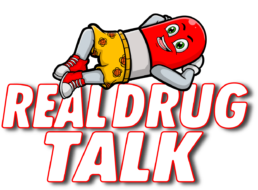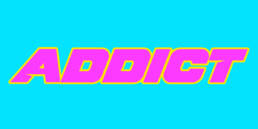I became interested in working in the drug field, initially through my own experiences and some significant adverse outcomes among fellow travellers and friends. My use was inquisitive, sometimes intense and chaotic and sometimes downright risky. Some overdoses and other frightening experiences resulted in a decision to quit, but also to join a local peer support group who aimed to prevent and respond to overdoses and to support people affected by drug use who were doing it tough on the streets. As I worked through my first degree, drug use and related problems were a key part of my interest. Here I am today, at Jack’s invitation, coming to the close of a drug research, prevention, policy and treatment career and reflecting on how my own experiences and early reading and research influenced my thinking and practice, especially in relation to the question of how people move out of risky and/or problematic drug use.
Spontaneously Getting Off Drugs
If I were to simplistically describe the various reports and evidence, it appeared that there were two broad stages. The first involved those things that contributed to the initial recognition that all was not as it should be (problem recognition; “it’s not worth it anymore”; “I don’t want to damage my relationships”) and deciding to do something about it. The second involved the implementation and maintenance of action to change the behaviour and reduce or stop unwanted consequences. This was not a new conceptualisation: Mark Twain clearly articulated the distinction between giving up and staying stopped when he said something along the lines of “Giving up smoking is the easiest thing in the world. I know because I’ve done it thousands of times.”
Initial recognition of there being a reason to change might involve a range of events and factors, but usually it includes a personally relevant adverse outcome or accumulation of such outcomes. However, we need to understand the critical importance of the personal relevance of what we deem adverse outcomes – one person’s hangover might be the best reason to never drink again, another person’s indication of what a good night they just had; one person being arrested for using methamphetamine might signal the need to change, another person might interpret it as something that enhances their reputation amongst their peers; some people might see adverse outcomes from drug use as acceptable collateral damage in the pursuit of a good time. Where personally relevant adverse outcomes are identified, they might be the personal experience of negative physical and emotional events or seeing a friend or someone we can relate to having something bad happen to them. I was attracted to Roizen’s (1983) neat conceptualisation of the various areas of harm (in relation to alcohol) under the headings of Liver (representing health) Lover (representing impacts on relationships) Lawyer (representing legal issues) and Livelihood (representing impact on quality of life, employment etc).
Some people report experiencing adverse outcomes or events that were so significant that they had a “Road to Damascus” like impact. For example, one person told me about the morning after a very heavy night – they woke up to find their daughter crying, standing over them crumpled at the bottom of the stairs covered in their own vomit. They vowed never to expose her to that again. For other people, a shift in the perceived balance of positive and negative consequences of drug use, might be a more steady accumulation of unwanted consequences. Something relatively trivial might tip the balance, prompting a look back at other accumulating costs leading the person to conclude “it’s not worth it anymore”.
Understanding adverse experiences
Having followed a similar path, I became fascinated by the observation, one widely commented on in the literature, that many people give up problematic drug use, some with treatment, some despite the treatment they are offered and some without any evidence of formal intervention. When no treatment is involved it has been variously called spontaneous remission, natural recovery, self-change and natural remission. It became clear from my own experiences, observing others and reviewing the rapidly emerging commentary (e.g., Tuchfeld, 1981; Stall and Biernacki, 1986; Waldorf et al 1991) that none of these terms could fully capture the complexity of the range of factors and processes involved. I will use the term “giving up” but hasten to add that I realise that this is far too simple. I use the term not to just capture abstinence – I include reductions in use and prevention and reductions of harms a person might experience or anticipate. And as already indicated, I will reflect mostly on the early work – not the most current – to illustrate how my early interests developed. I am also aware of the limitations of much of the research – selection bias of people who agree to take part in relevant studies, much of it based on subjective recall of historic events and so on. My intention is to explore a narrative, one that influenced my thinking, not undertake a systematic review.
Getting Over substances
Patrick Biernacki reminded us that it isn’t always significant/major events that change things, especially for those who are not severely dependent and/or enmeshed in drug use. Some people appear to simply “drift out” of the old lifestyle. Sometimes when teaching I illustrate this with the experiences of heavy drinkers I knew at university. When they graduated, and as their lives changed – job, having to get up in the morning, family, mortgage, moving away from their drinking compatriots into new relationships where drinking was not so central – their drinking significantly reduced. It wasn’t so much that there was a decision to change – it was more that circumstances changed so much that drinking simply didn’t figure so highly in their drinking lives. Biernacki in his excellent book on moving out of heroin dependence, described various routes where people “drifted away” from drug use.
The deliberate decision to get off drugs
For those who make a more deliberate decision to change, several researchers concluded that most often it is an accumulation of a range of problems that significantly disrupt the person’s life – and many concluded that it was as futile to search out the reason to give up as it was to identify the single reason why people might commence drug use. But understanding the process of “stopping” is not enough – as mentioned earlier, maintaining change is a related but separate process. It can often involve significant change – in the person’s lifestyle, their relationships, their work, their lifestyle and in their environment. As one person referred to it: “I had to totally re-do myself. Re-invent my relationships, my interests, what was important to me. Getting married and having kids made that happen. But I also got a new job – new mates.” Different research reports (e.g. Vlaillant and Milofsky, 1982; Biernacki 1983; Robins et al 1980; Granfield and Cloud, 2001) have variously identified factors such as:
- The ability to modify one’s own lifestyle and significant changes;
- An actual change in job or relationships (entering a new relationship; having children);
- Significant social capital (a supportive family, community, workplace or other network as well as access to other means, such as money, to change);
- Developing a sense of control over one’s own life, especially drug use’ and a sense of hope and possibility outside of drug use;
- Having strong adverse reactions to drug use (e.g. becoming too ill to use again or having external constraints – the threat of losing a job, relationship or freedom if the pattern of drug use continues or occurs again); or,
- Substitute dependence – and intense involvement in another behaviour – sport, hobbies, work.
What We Learned About Stopping Drugs From The Vietnam War

The list isn’t intended to be comprehensive. But key illustrations were provided by Robins and colleagues (1980) and O’Brien and colleagues (1980). These authors noted the very high levels of heroin dependence among US troops in Vietnam which developed when the drug was readily available in conditions that were conducive to self-medication and escape. When the troops returned to the US, and were referred into treatment, the remission rates far exceeded expectations. It appeared that when people exited the environmental conditions conducive to higher rates of drug use and returned to their usual lifestyle and environmental influences and supports, the probability of relapse was decreased.
It is important to recognise the importance of subjective relevance. We cannot necessarily “prescribe” the relevant change in lifestyle. Religion might be important for one person, irrelevant for another; supportive families can be critical for some people, of little impact with others. But there seemed to be some kind of commonality that could be captured under the notion of quality of life. Those who maintained change appeared to be able to access supports (families; networks; communities) and muster internal and external resources that helped support change and maintenance of change. Quality of post-change living was critical. If someone gives up heroin and their life is still unrewarding/unpleasant, change is unlikely to endure.
Social Determinants of Health and Drug Use
A colleague used to illustrate this with a “ropes over the cliff” analogy. If we were hanging over a cliff with one rope, and someone tried to cut the rope, we might hang on all the tighter. If we have five ropes, and someone might try to sever a rope, we might be uncomfortable – but we have four more ropes. Imagine someone who was drug dependent (rope 1) who had other ropes supportive family, recreational interests, meaningful community connections etc). If we try to cut the dependence rope they might be uncomfortable, but at least they had other ropes to hand onto. If all they had was one rope – dependence – and no recreational interests, community or family connections, then trying to cut the dependence rope might mean they hang onto it all the more dearly. Without taking the analogy too far, the suggestion was that, perhaps, instead of spending all our time trying to cut the dependence rope we might throw other ropes over the cliff. And this raised a question for me. Am I in the business of stopping people using drugs, or am I trying to help people improve the quality of their lives. If the latter, one option might focus on drug use, but it is not sufficient. If it’s the former, then I quickly learned, miserable abstinence is not a particularly attractive or sufficient outcome and is unlikely to endure. If people are also worried about (and coming into treatment because of) relationships, sleep, isolation, anxiety, housing, legal problems, poor physical health, work or other key challenges, should we not be responding to these, and if we don’t, should we be surprised when some people don’t retain an enduring connection with services.
And this is a key challenge we still have. Much of our effort in preventing and responding to drug related harm is focussed on helping individuals cope with an increasingly taxing environment, teaching them to resist temptation, with much less focus on addressing social and structural determinants of health in general and of drug related harm in particular. If a person attempts to change, and the environment is not supportive of such effort, and if the effort is not rewarded – if their life does not improve – then resolve is likely to be tenuous. Why would anyone express surprise that they might stumble at the earliest challenges. Unless of course we are comfortable suggesting that success is the work of great treatment and failure is the fault of the unworthy.
Quality of life and drug use

The work on “giving up” I have just described coincided with work by people such as Azrin and colleagues (Azrin 1976; Azrin et al 1982) who illustrated that actively restructuring dependent drinkers environments (social, familial and occupational) so that change was connected to improved quality of life was more effective than traditional treatment. Perhaps the lesson is that if we confine our work to perceived individual weakness, if we take a “within the skin and within the clinic” focus, we will limit the impact. But our impact can be improved if we look more to quality of life.
A separate set of experiences amplified these observations when my colleague (Bill Saunders) and I incorporated exercises asking workshop participants to brainstorm “why people gave up” and then “why people maintained change”. Formal notions of treatment hardly ever got mentioned, even though these workshops were delivered over four decades with several thousand of clinicians. This does not mean that treatment is irrelevant – it means that we must look beyond the walls of a clinic in what we do. One of our colleagues neatly captured this saying “Treatment is the pimple on the whale’s bum of recovery”. Depending on the individual client, we need to consider quality of life, variously influenced by housing, job, relationships, community, connectedness and so on.
This has all influenced my thinking, that if we want enduring change we cannot just focus on a deficit approach to treating individuals in terms of symptom management, coping skills, pharmacological need and so on. The diverse treatment options of counselling, residential treatments, pharmacotherapies and support networks must be supported by active engagement in ensuring the quality of people’s lives – the structural and social determinants of health – housing, relationships, education, community connectedness, jobs and so on – also need to be supported. Of course this is not new – but it was more challenging thinking when I started out in my career.
The Burning Question For You
So how do we change our treatment outcomes to focus more on improved quality of life rather than just whether a person is using or how much they are using…
Would love to hear your thoughts in the post comments
Professor Steve Allsop
Steve Allsop has worked in the drug field for over 40 years and been involved in policy, prevention and treatment research and professional development for health, police, education, welfare staff, sporting and community organisations. He is Professor at the National Drug Research Institute at Curtin University having served as Director from 2005-2016. He has previously worked as the A/Executive Director, Drug and Alcohol Office, Western Australia and the Director of the National Centre for Education and Training on Addiction, Flinders University of South Australia. He has an interest in research, prevention, harm reduction, treatment and policy responses to alcohol and other drug problems. His contribution to the field has been recognised with induction into the WA Alcohol and Other Drug Awards Honour Roll, the APSAD senior scientist award in 2015 and the National Alcohol and Other Drugs Honour Roll in 2017.He has diverse professional and community memberships including"
• Chair Alcohol and other Drug Advisory Board, WA
• Member National Suicide Prevention Office Advisory Board
• Australian National Advisory Council on Alcohol and Drugs (Deputy Chair until 2022; Current member)
• Member Mental Health and Wellbing Advisory Group, Australian Defence Force
• Director Board, Australian Drug Foundation
• Member Child Death and Domestic Violence Review Panel, Ombudsman, WA
• Member WA Country Football Commission Community Advisory Panel
• Member National FASD Strategy Advisory Group
• Deputy Regional Editor, Addiction
• Chair, WA Network of Alcohol and other Drug Agencies (until 2022)



